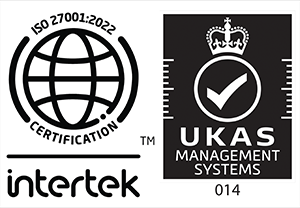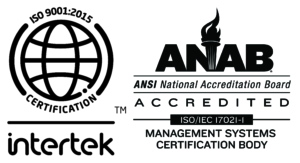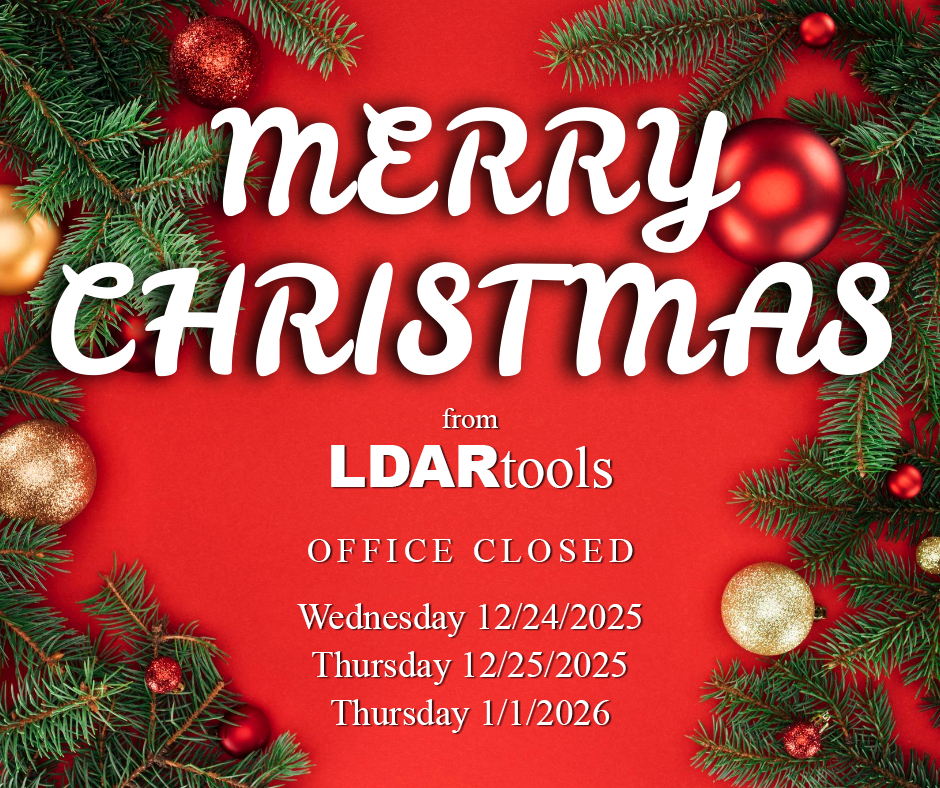
-
- Wednesday, December 24, 2025
- Thursday, December 25, 2025
- Thursday, January 1, 2026
Have a blessed and safe holiday.

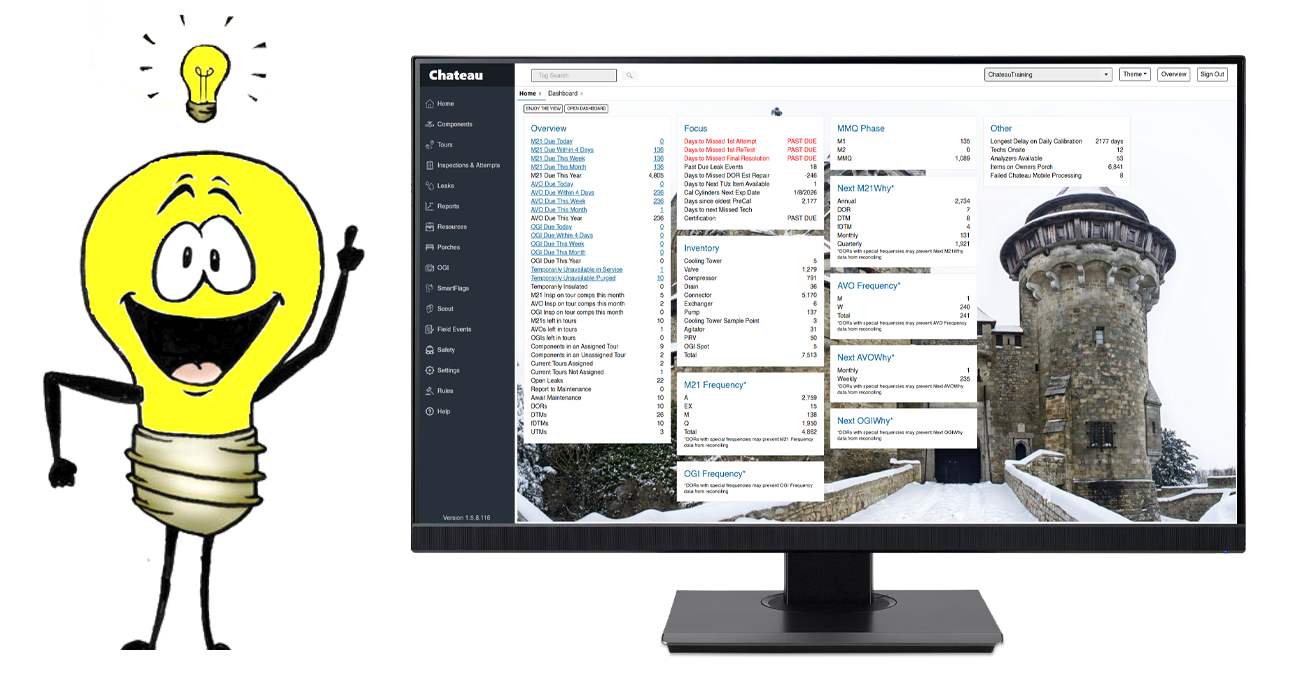
LDARtools will be closed Monday September 1, 2025 in recognition of Labor Day.
We will be conducting normal business operations Friday August 29 and Tuesday September 2.

We hope you will join us in welcoming one of the newest members of our team, Zach Van Deusen, as our Chief Marketing Officer.
With more than 13 years of leadership and sales experience in the petrochemical and oil & gas industry, he brings a wealth of experience and knowledge to LDARtools, spearheading sales efforts to grow the company’s reach and impact.
When asked what he likes best about joining our team at LDARtools, he said, “I am impressed with everyone’s drive and dedication to each other, and our customer satisfaction. I am most excited about spearheading sales, and new customer outreach!”


In honor of Memorial Day, our Warehouse and Support will be closed Monday, May 26, 2025. We will resume normal business operations on Tuesday, May 27, 2025.

In the fast-paced world of industrial operations, ensuring compliance with environmental regulations is crucial. Enter LDARtools’ Chateau, a powerful LDAR monitoring software specifically designed to help organizations manage and streamline their inspection processes.
For environmental engineers, industrial compliance officers, and LDAR professionals, Chateau offers a seamless solution for maintaining regulatory compliance while enhancing operational efficiency.

The Importance of Chateau
Chateau is an innovative leap forward for LDAR monitoring software, especially with managing inspections in industrial settings. It provides an all-in-one platform for scheduling and conducting various inspections, ensuring compliance standards are met and environmental safety is prioritized. For professionals tasked with maintaining LDAR compliance, Chateau simplifies the intricate process of organizing inspections, allowing them to focus on what truly matters—safety and compliance.
Chateau’s user-friendly interface and robust features make it an indispensable tool for anyone in the industry. Whether you are an environmental engineer overseeing multiple sites, or a compliance officer ensuring adherence to regulations, Chateau offers the ability to schedule inspections with precision and access comprehensive data.
LDAR Compliance and Four Key Inspections
In the realm of Leak Detection and Repair (LDAR), four types of inspections stand out for their critical role in environmental safety and compliance, and are integral components of any comprehensive LDAR program: M21, Optical Gas Imaging (OGI), Audio Visual Olfactory (AVO), and Cooling Tower. Chateau helps manage each one of these types of inspections in ways no other LDAR monitoring software can.
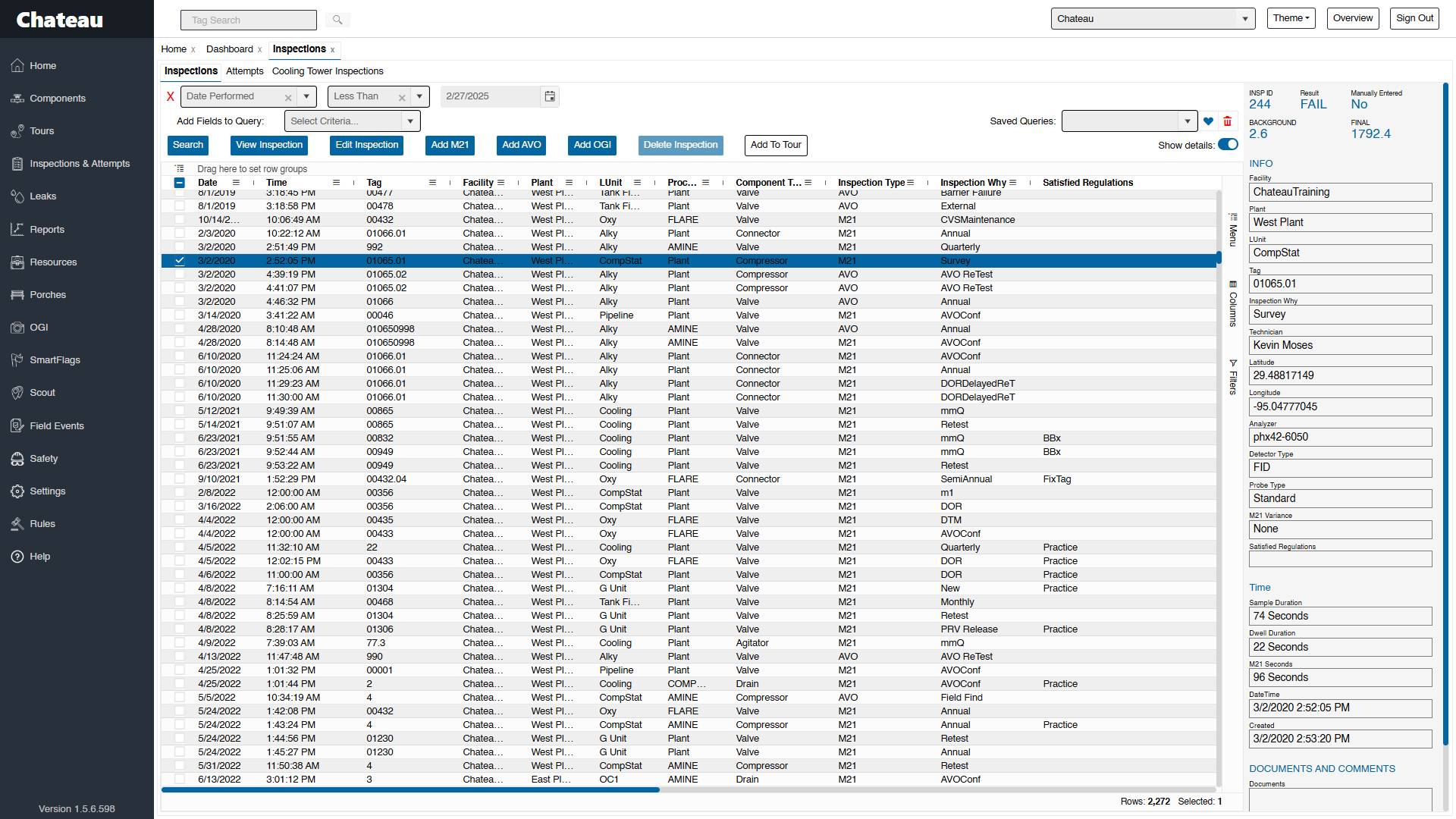
M21 Inspections
M21 inspections are the backbone of LDAR programs, focusing on identifying and measuring gaseous emissions from equipment in industrial facilities. Compliance with Method 21 regulations ensures fugitive emissions are detected and controlled, minimizing their impact on the environment. Conducting regular M21 inspections is vital for maintaining air quality and preventing adverse health effects.
Optical Gas Imaging (OGI)
Optical Gas Imaging represents a leap forward in inspection technology, enabling professionals to visualize and identify gas leaks using infrared cameras. OGI inspections enhance the visibility of invisible gases, providing a powerful tool for detecting leaks that would otherwise go unnoticed. This technology is instrumental in reducing greenhouse gas emissions and supporting sustainable industrial practices.
Audio Visual Olfactory (AVO) Inspections
AVO inspections rely on the keen senses of inspectors to identify leaks through sight, sound, and smell. While simple conceptually, AVO inspections play a critical role in LDAR programs by providing an additional layer of detection. Trained inspectors use their expertise to spot anomalies, ensuring leaks are promptly addressed and environmental safety is upheld.
Cooling Tower Inspections
Cooling towers are essential components of many industrial facilities, responsible for dissipating excess heat. However, they can also be sources of fugitive emissions if not properly maintained. Regular inspections of cooling towers help identify issues such as leaks and inefficiencies, safeguarding environmental compliance and ensuring optimal performance.
Advantages of Using Chateau for Inspections
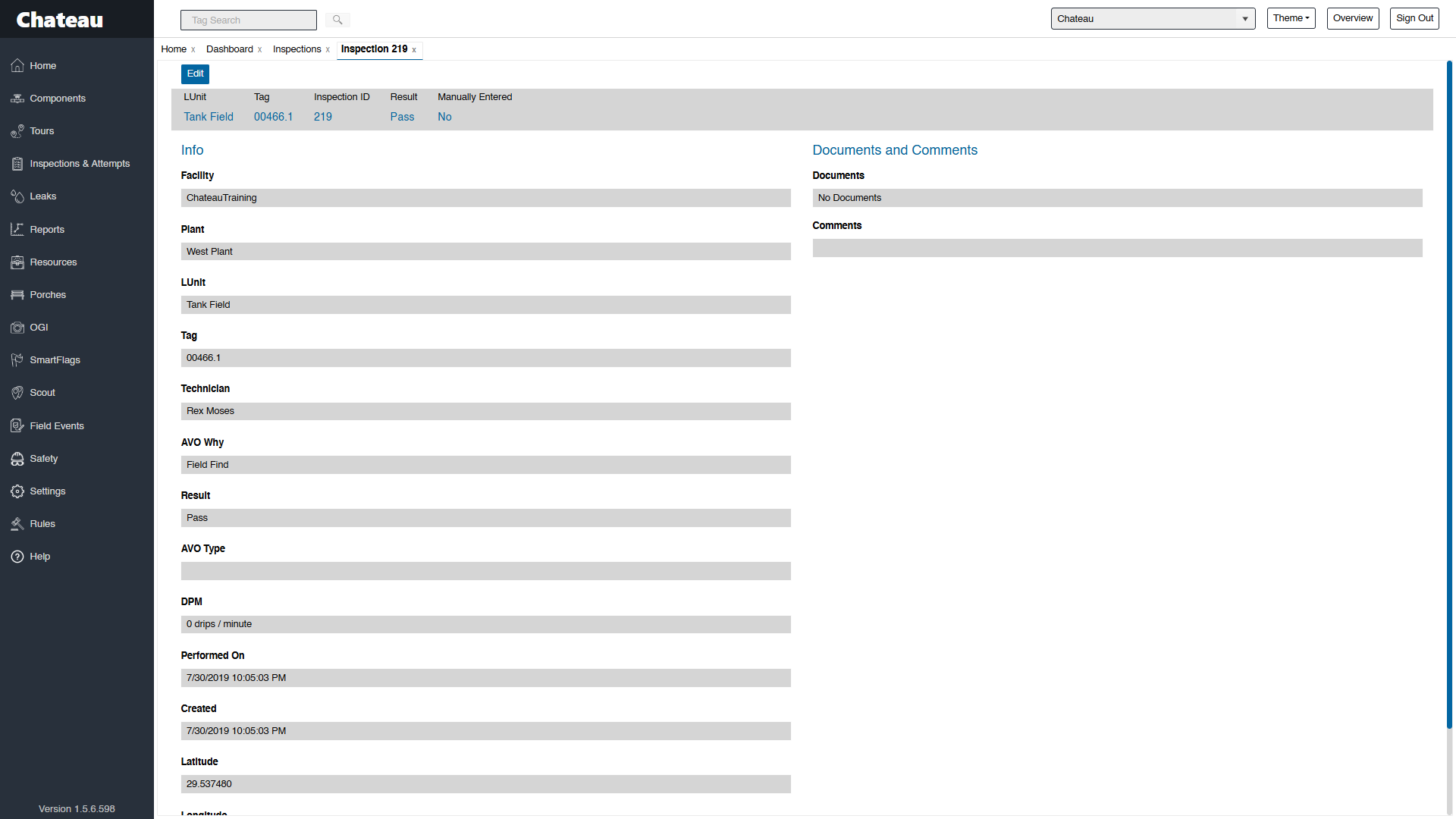
For environmental engineers, compliance officers, and safety professionals, the benefits of using Chateau LDAR monitoring software extend beyond scheduling and tracking inspections.
By automating the scheduling and management of inspections, Chateau reduces the administrative burden on professionals. This allows them to allocate more time to strategic tasks and decision-making. This efficiency translates into cost savings, as fewer resources are required to manage inspections and address compliance issues.
Additionally, Chateau’s centralized database ensures inspection data is accurate and easily accessible, eliminating the risk of data discrepancies and enhancing the reliability of compliance reporting. With accurate data at their fingertips, professionals can make informed decisions and implement effective corrective actions with Chateau better than any other LDAR monitoring software.
And finally, Chateau’s comprehensive tracking and reporting capabilities enable organizations to stay on top of compliance requirements. With real-time alerts and notifications, inspections are systematically conducted on schedule, reducing the risk of non-compliance and associated penalties.
Conclusion
LDARtools’ Chateau is a powerful LDAR monitoring software for mastering industrial inspections, offering a seamless solution for scheduling, conducting, and managing compliance efforts. By understanding the significance of M21, OGI, AVO, and Cooling Tower inspections, and leveraging Chateau’s capabilities, professionals can enhance environmental safety and operational efficiency.
Ready to take your inspection processes to the next level? Explore the benefits of Chateau and discover how it can transform your approach to LDAR compliance. Contact us today at sales@ldartools.com to learn more about the advantages of efficient scheduling, accurate data management, and improved compliance outcomes. Your path to streamlined inspections and environmental excellence starts here.
Note: This article will outline the options available to LDAR (Leak Detection and Repair) programs regarding pegged emission rates and analyzers, focusing on valves in light liquid/gas vapor service. The information is prepared solely for your consideration. LDARtools does not provide regulatory advice or guidance.
Originally published by Fugitive Emissions Journal 10/02/2024.
Definitions and Background
Pegged Emission Rate – The specified emission rate used for any leak with a “pegged” screening value (i.e., any PPM reading exceeding the Analyzer Peg Value).
Analyzer Peg Value – The highest PPM reading an analyzer is designed to detect.
When a PPM reading is higher than the Analyzer Peg – “The instrument measurement may exceed the scale of the instrument, referred to as a ‘pegged’ readout. For several instruments, the highest readout on the scale is 10,000 ppmv. For generating an emissions estimate, a dilution probe should be employed to measure concentrations greater than the instrument’s normal range unless average emission factors for greater than or equal to the ‘pegged’ readout are applied. Extending the measurement range necessitates calibrating the instrument to the higher concentrations.” (From section 2.3.3 of the 1995 Protocol for Equipment Leak Emission Estimates).
Calculation of Emissions Using Correlation Equation
To estimate emissions using the EPA Correlation Approach, measured concentrations (screening values in PPM) for each component are individually calculated by applying the PPM reading to a specific Correlation Equation, specified for that component type and physical state.
How it works: There are three possible scenarios in calculating emission for a specific component.
- If there is no actual inspection available (represented in PPM), then you must use the Average Emission Factors provided by the EPA for the component type and physical state.
- If there is an inspection available (represented in PPM), and the PPM reading is lower than the Analyzer Peg Value, you must use the specific Correlation Equation provided by the EPA for that component type and physical state.
- If there is an inspection available (represented in PPM) and the PPM reading is equal to or greater than the Analyzer Peg Value, then you must use the Pegged Emission Rate for that component type and physical state. This Pegged Emission Rate inevitably results in a significantly higher emission rate than would the Correlation Equation calculation (#2, above).
For an analyzer with an Analyzer Peg Value of 10,000 PPM, any reading above 10,000 ppm can be easily calculated using the 10k PPM Pegged Emission Rate. Similarly, for an analyzer that pegs at 100k, use the 100k Pegged Emission Rate (potentially subject to the calibration requirements below).
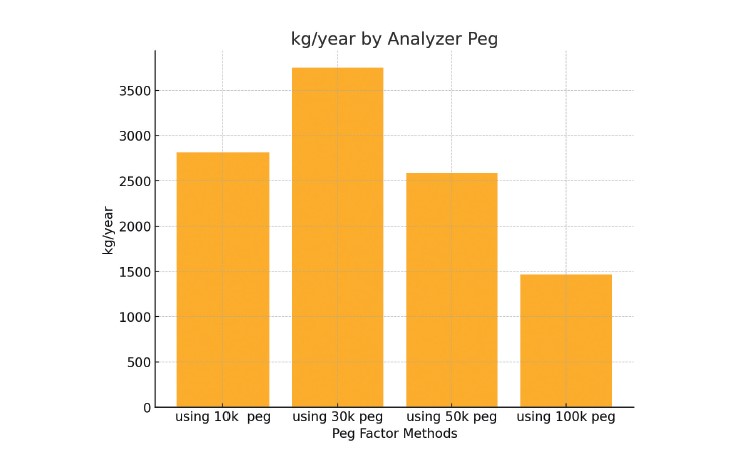
Considerations for Different Analyzer Peg Values
If you have an analyzer with an Analyzer Peg Value of 30k or 50k, it would be prudent to use the correlation equation up until that pegged value, and then use the 100k pegged value above it. However, this approach may result in an increase in reported emissions.
Example: Using an analyzer with a 30k pegged emission rate:
- PPM value is 30,001 (a pegged reading).
- 100k emissions factor converted back to ppm is 2.6 million ppm.
- If using a 10k ppm analyzer peg, emissions reported would be about 912,000 ppm.
Converting mass back to ppm is not considered best practice, but is used here for illustration purposes.
Increased accuracy of reporting for components leaking between 10k and the analyzer peg value is a benefit of using a 30k or 50k analyzer peg, but pegged values could significantly increase reported emissions.
Questions
Do you need to calibrate to the Analyzer Pegged Value?
Maybe. The 1995 Protocol states: “The instrument measurement may exceed the scale of the instrument, referred to as a ‘pegged’ readout. A dilution probe should be employed for concentrations beyond the instrument’s normal range unless average emission factors for greater than or equal to the ‘pegged’ readout are applied. Extending the measurement range necessitates calibrating the instrument to higher concentrations.”
Since “higher concentrations” are not defined, one interpretation is to use the highest available concentration for calibration, which for methane is ~25k ppm in air (above which it becomes explosive).
Another option is to have a factory calibration done annually at 100,000 ppm. This calibration would persist during routine daily calibration.
What is my Analyzer Peg Value?
The 1995 protocol was developed with analog analyzers that could not exceed the meter dial’s printing. Modern analyzers use dynamic ranging to extend the upper limit significantly, but accuracy and linearity above 10,000 ppm (except for phx42) are uncertain, especially without higher value calibration.
The 2011 & 2015 protocols state: “If the monitoring instrument measures concentrations only up to 10,000 ppmv or 100,000 ppmv, the applicable values for pegged emission rates in Table 2-2 (below) are used to estimate emissions.”
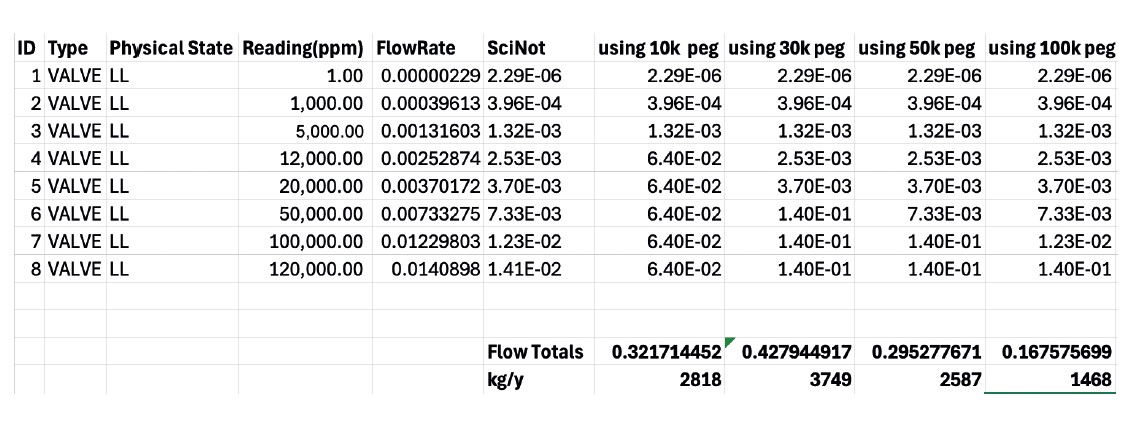
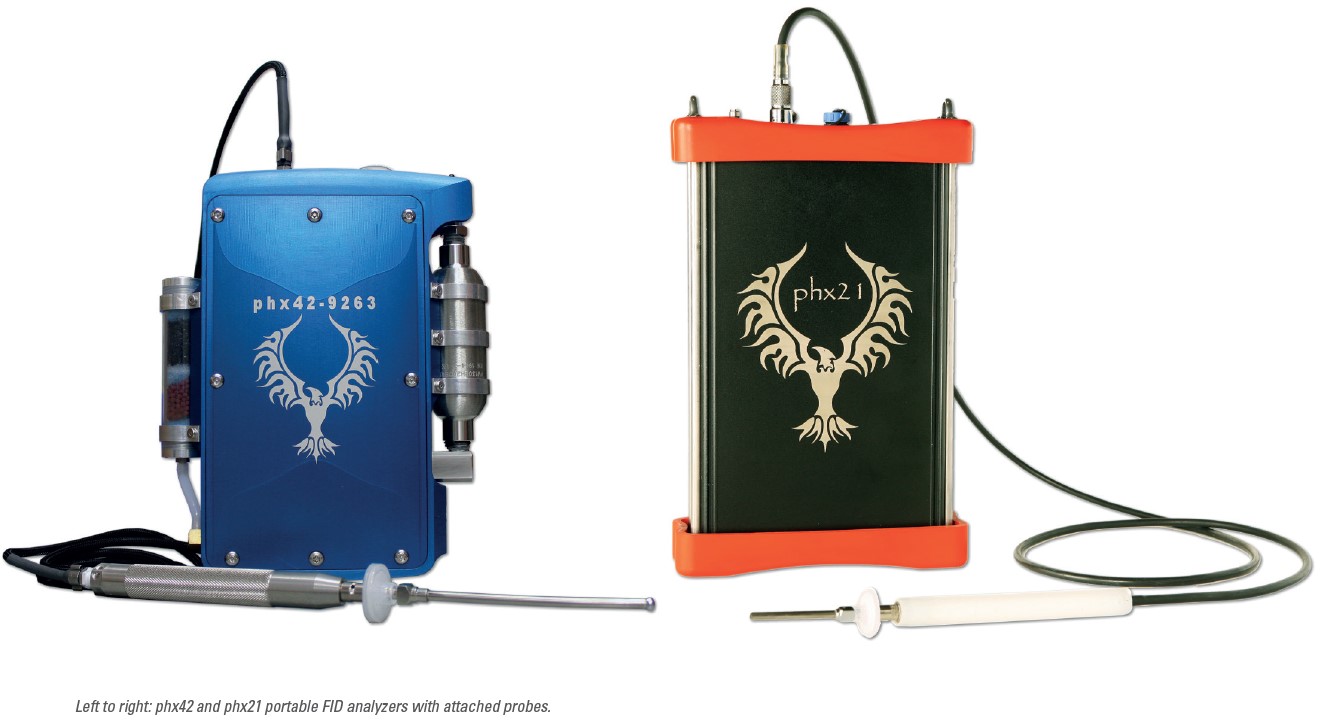
Factors Determining Max Reliable PPM
- Hardware on the Circuit Board: This chip reads minimal current from the detector. Better accuracy at low ppms generally means a lower max reading before saturation. Analyzers impacted: All.
- Software Controlled Max PPM Value: Possible for phx42 but not implemented.
- Lack of O2 to Maintain Flame: For sample pumps providing combustion air (assuming methane), the limit is ~50k ppm. Linearity is impacted below this, and calibration to a higher value like 25k ppm can somewhat correct for this for values below the calibration point. Analyzers impacted: phx21, TVA1000b, and TVA2020.
- Detector Temperature Max: Prevents Teflon inside the detector from overheating; this only applies to phx42. The limit will not initiate shutdown until well over 100k ppm for some time.
Specifications from Common Manufacturers (as of 07/29/24)
TVA1000b:
- Dynamic Range: 5-2,000 ppm (PID) isobutylene; 0.5-50,000 ppm (FID) methane
- Linear Range: 5-500 ppm (PID) isobutylene; 0.5-10,000 ppm (FID) methane
TVA2020:
- FID Instrument: ±10% of reading or ±1.0 ppm, from 1.0 to 10,000 ppm
- Dynamic Range: 5-2,000 ppm (PID) isobutylene; 0.5-50,000 ppm (FID) methane
- PID Instrument: ±20% of reading or ±0.5 ppm, from 0.5 to 500 ppm
- Concentration: FID: 0-30,000 ppm (methane); PID: 0-2,000 ppm (isobutylene)
PHX21:
- Range: 0-50,000 ppm Methane
phx42:
- Range: 0-100,000+ ppm Methane
- When calibrated to Zero and 25,000ppm Methane, 15% accuracy is maintained at 100,000ppm.
- Annual Factory Calibration is available for 100,000ppm. A factory calibration will not be overwritten by daily calibrations in the lower spans.
- Higher linear performance due to combustion air scrubber and second pump preventing oxygen displacement in combustion air.
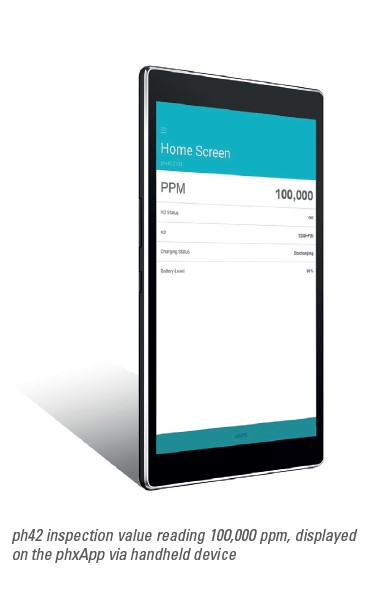
Conclusion
End Users must determine the digital equivalent to “off scale,” “measures,” and the necessary calibration requirements. These decisions will determine what to select for your Analyzer Peg Value.

